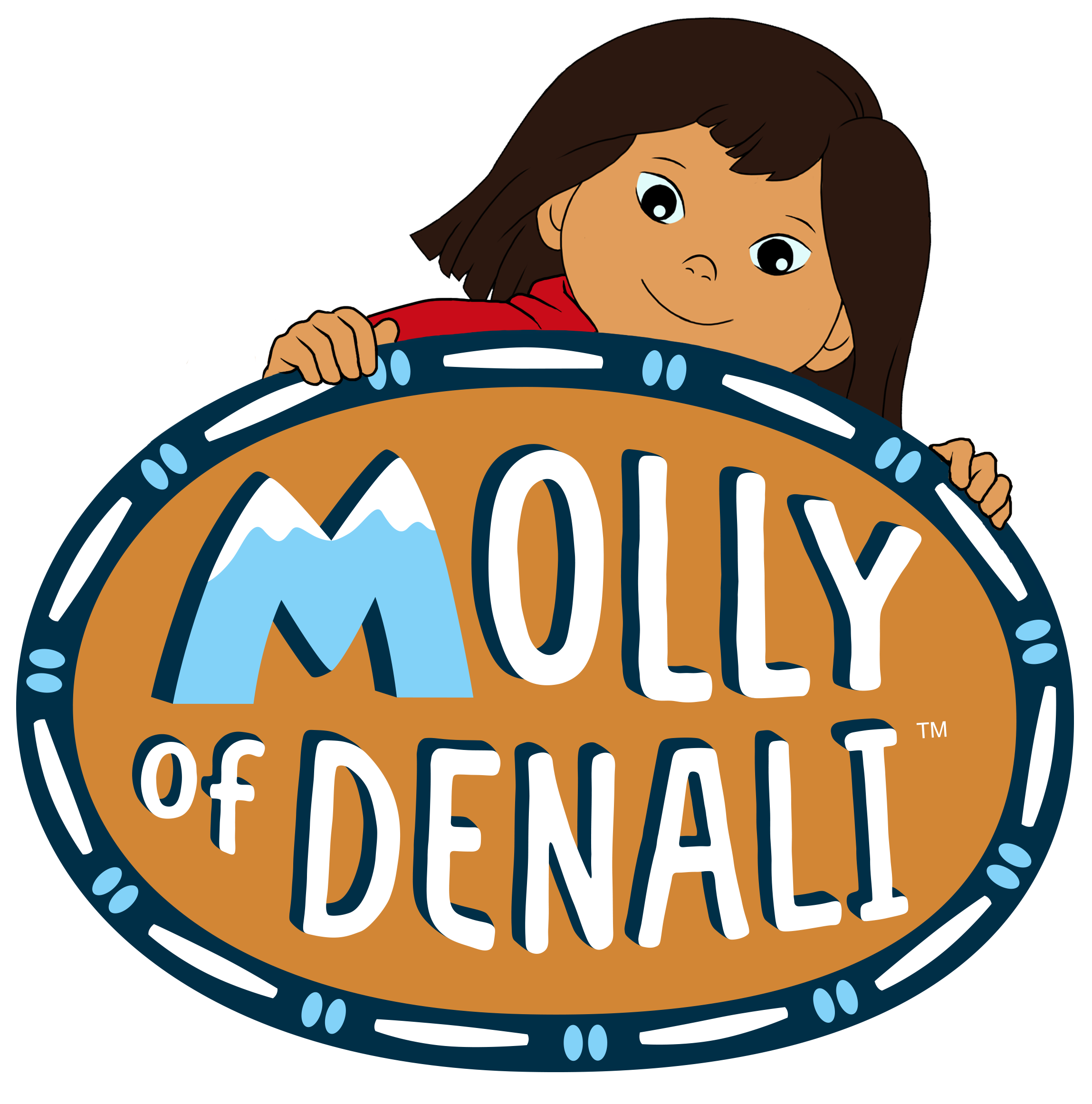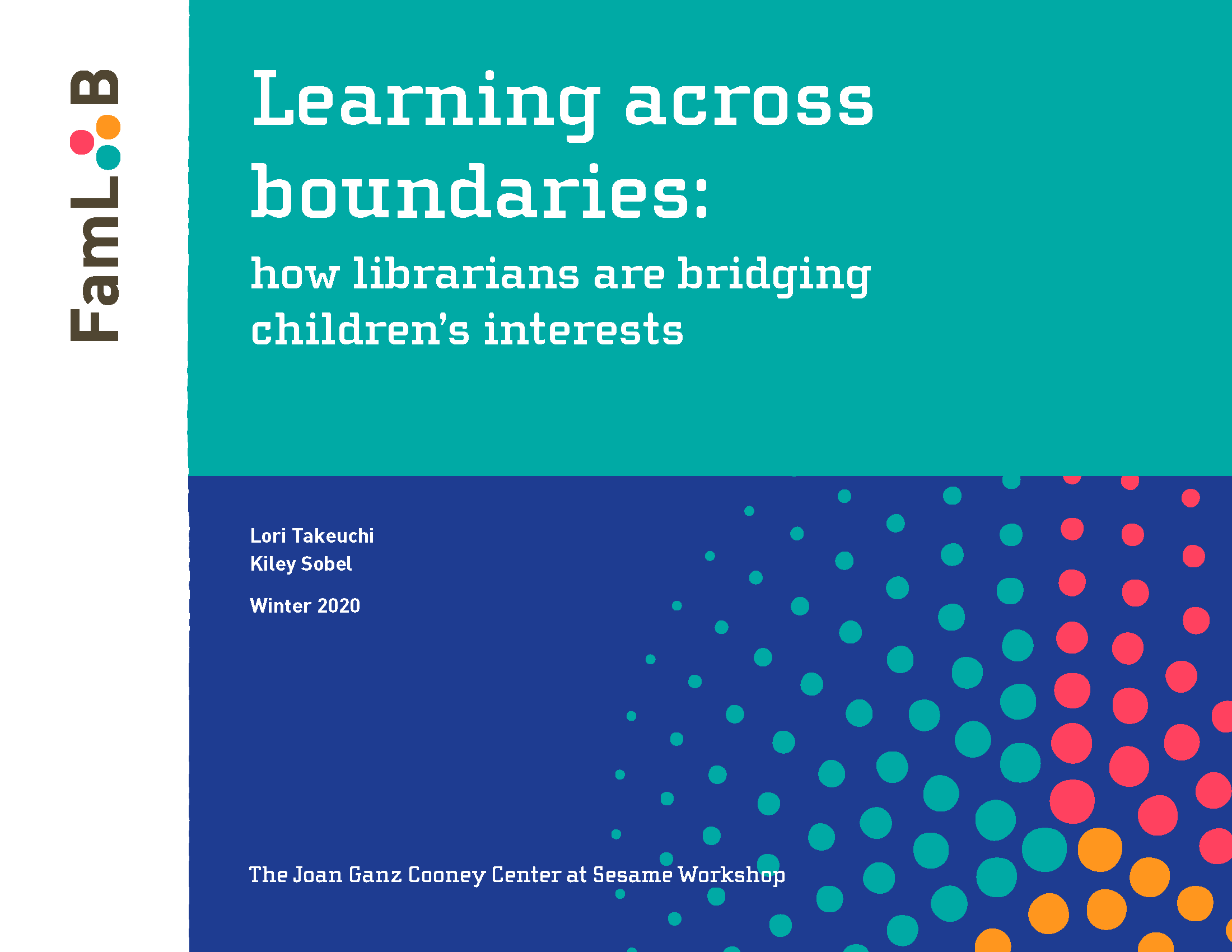Claudia Haines, librarian at Homer Public Library in Homer, Alaska, describes a recent Storytime with Robots event that she hosted in which children and their parents had the opportunity to think about computational thinking along with early literacy. This post was originally published on Claudia’s blog, Never Shushed, and appears here with permission.
I’ve been reading and thinking A LOT about computational thinking (CT) and coding this winter as part of my work on the Libraries Ready to Code initiative. And by A LOT, I mean A LOT, A LOT. Needless to say, that thinking has not stayed put in my coding programs for older kids and teens, like <HPLCode>, or in the Maker Club. It has spilled over into every aspect of my work at the library, including storytime.

Storytime has always been about supporting early literacy (EL) and learning. What is cool about computational thinking is that it aligns so nicely with so much of what we already do at the library, even in storytime. Every time I mention CT or coding in a storytime or a family program, a grown-up speaks up and makes the connection, on their own, between traditional literacy and code or computational thinking. “Making a program (by connecting blocks of code) is like building a sentence,” for example.
The Plan
Five minutes: Settling In
As families entered, I invited them to “get ready for storytime.” For regulars, this meant following a procedure they knew. For new families, I broke down the “get ready for storytime” into: take off your shoes if you want to (okay at our library because of the snow, mud, etc. that is outside), hang up your coat if you brought one, choose a storytime mat, and meet me at the reading area.
Five minutes: Getting Started
When we were gathered in the reading area, I asked kids “what is a robot?” Kids shouted out ideas and led us to talk about what robots do, who designs them and why. I then asked the group “what is the difference between you and a robot?” and “what is similar?”
I then showed the group my Code-a-Pillar and pointed out the parts of the robot (power button, lights, sensors, code blocks, wheels, etc.) I told them this was my turn to play with the robot, but they would all have a turn after we played and read together.
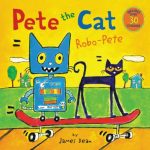
Ten minutes: Book #1, Pete the Cat, Robo-Pete by James Dean (Harper Collins, 2015)
As with any storytime reading, this was a conversation! We talked about patterns in the story and kids tried to anticipate what might happen next based on previous occurrences in the story. We also compared Robo-Pete to what we knew about robots.
About five minutes: Feltboard Robots
Next we built a robot as a group on the felt board. I cut enough similar pieces of felt into recognizable shapes to make two robots. I divided the felt board into three sections. If you have used Scratch or other block coding platform, you will recognize the similarity of the three sections (the stage, scripts area, and blocks palette). I built one robot beforehand and had the other identical pieces in the thin section of the board. They pieces were arranged by shape. As a group, we talked about the robot’s parts and what we thought each might be used for. We then started building the new robot out of the other parts. The idea here was to support shape knowledge, but also to practice the process of articulating making, doing, or building something. I asked where we should start (“At the bottom!” they yelled). I then asked kids to tell me the shape and color of the part they wanted me to add next, and I moved each of the the felt pieces over. We built the robot you see here. This activity also became a station for further exploration after the group time.
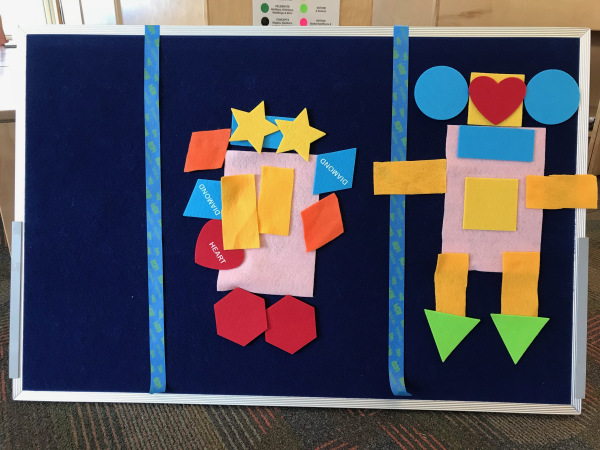
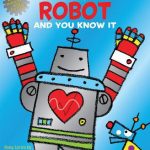
Ten minutes: If You’re A Robot And You Know It by David Carter (Cartwheel Books, 2015)
Before we read (and sang and danced) to this song—I mean, book—we talked about circuit boards, which are featured in the text. Kids quickly identified with this familiar song and jumped up to act it out. The text of the book repeats in a similar fashion to the song and kids move different robot parts in each each verse.
Ten minutes: Robot Zot by Jon Scieszka (Simon & Schuster Books for Young Readers, 2009)
To finish off the reading portion of storytime we read a book that is just silly! Be ready to use your animated voices and be loud!
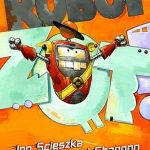
3 minutes: Clap Your Hands by They Might be Giants
Before we moved on to the station portion of storytime, we danced together. I told them there were three actions we would do in this song: clap hands, stomp feet, and jump in the air. I asked them “How do we know when do each action?” Kids answered with ideas like “until it stops!” I brought out the images of each action (5 hands clapping, 5 feet stomping, 4 jumping) to match the number of times the singer says each action and then counted as we danced and did the actions. I mentioned that the song is divided into beats or sections (measures) so that the musicians and dancers know when changes will happen.
Stations
Code-a-pillar play
Here kids programmed the Code-a-Pillar to move towards a target. Some kids spent time figuring out how it worked and understanding which arrow was left or right. Kids took turns coding and even collaborated on where the robot should go (“It’s looking for something to eat.”). Grown-ups guided play at times, talking about the sequence of events that need to happen first, etc. and about directionals.
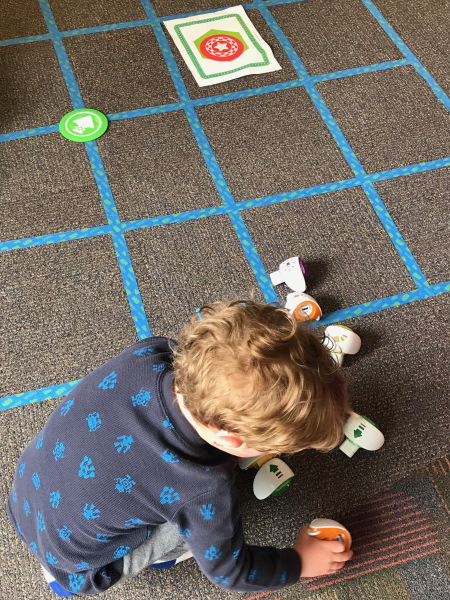
Cube Stackers
Future Coders: Cube Stackers by Alex Toys is basically a board game that involves cubes with robot parts on the different sides. Kids build robots by twisting an turning the sides based on instructions not he game cards. It is primarily for kids 5+. In the summer I have several 5+ kids that come to storytime, and this has been a hit with them. Whole families took time to work through this thoughtful game.
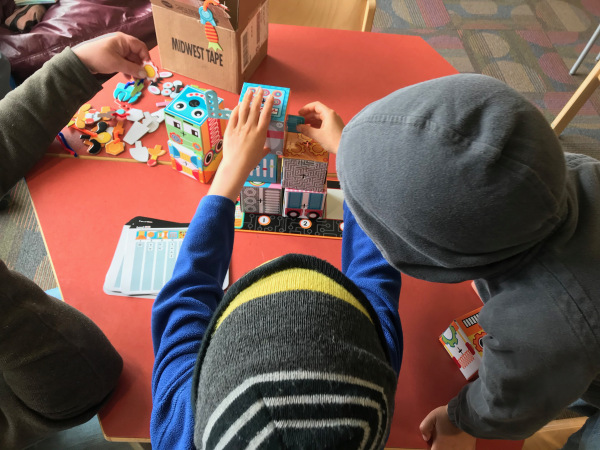
Aluminum Can Robots
In this activity, kids built robots by adding magnetized parts to cleaned off cans. I encouraged grown-ups to talk with kids as they built, asking open-ended questions about the robot, what is could do, etc.
To prepare, I had collected and cleaned aluminum cans for the robot bodies. I hot glued small magnets to objects like big buttons, clothespins, pipe cleaners, etc. for robot parts. Parts were set out all mixed up in bins and the bodies were laid out separately to encourage kids to create their own kind of robot.
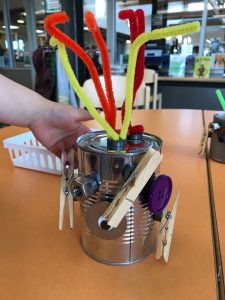
Robot Coloring Sheets
This activity was great for kids who like to color or needed a quieter activity between other stations.
Feltboard Robots
Younger children really loved this activity and enjoyed repeating what we had done as a group.
Robot Party app on the mounted iPad
Sago Mini’s Robot Party is a giggle-inducing group activity that involves building digital robots that dance and more. Perfect for groups of two or three because the app features multi-touch so kids (or kids and grown-ups) can work together.
How it Went
Families loved this storytime for the richness of the activities and the obvious learning. They appreciated the CT and EL asides and the play ideas they could replicate at home.
When I first got a Code-a-Pillar I had thought it would be kind of loud and garish for storytime, but not so. The sounds and lights are less intense in a group setting and the robot moves at just the right speed for young children learning to code for the first time.

Claudia Haines leads storytimes, hosts Maker programs, and gets great media into the hands of kids and teens as the Youth Services Librarian and Media Mentor at the Homer Public Library (Alaska). She is a co-author of the Association for Library Service to Children’s white paper, Media Mentorship in Libraries Serving Youth (2015). She trains other librarians as media mentors and serves on both local and national committees that support families and literacy. She blogs at www.nevershushed.com. @claudiahaines

